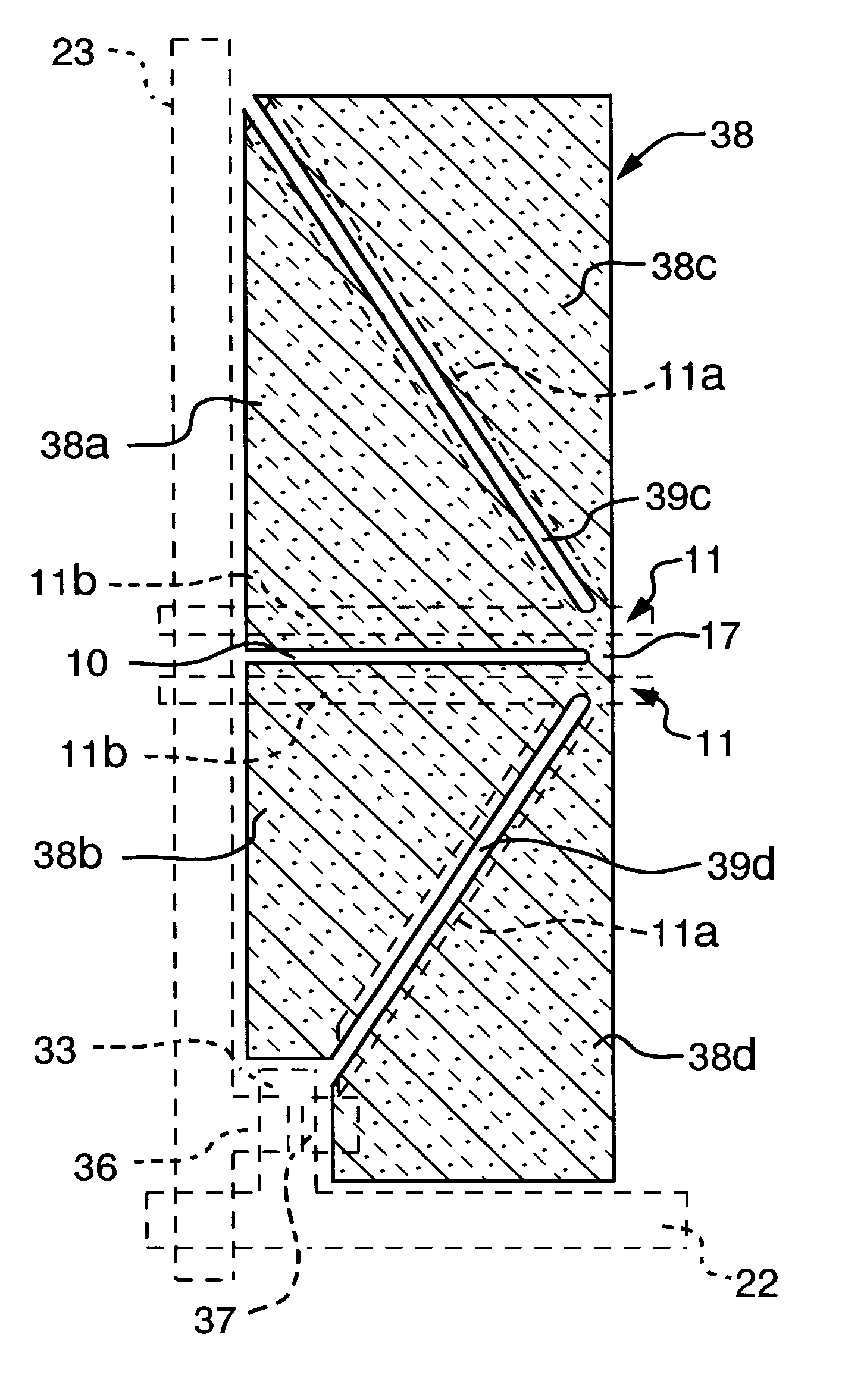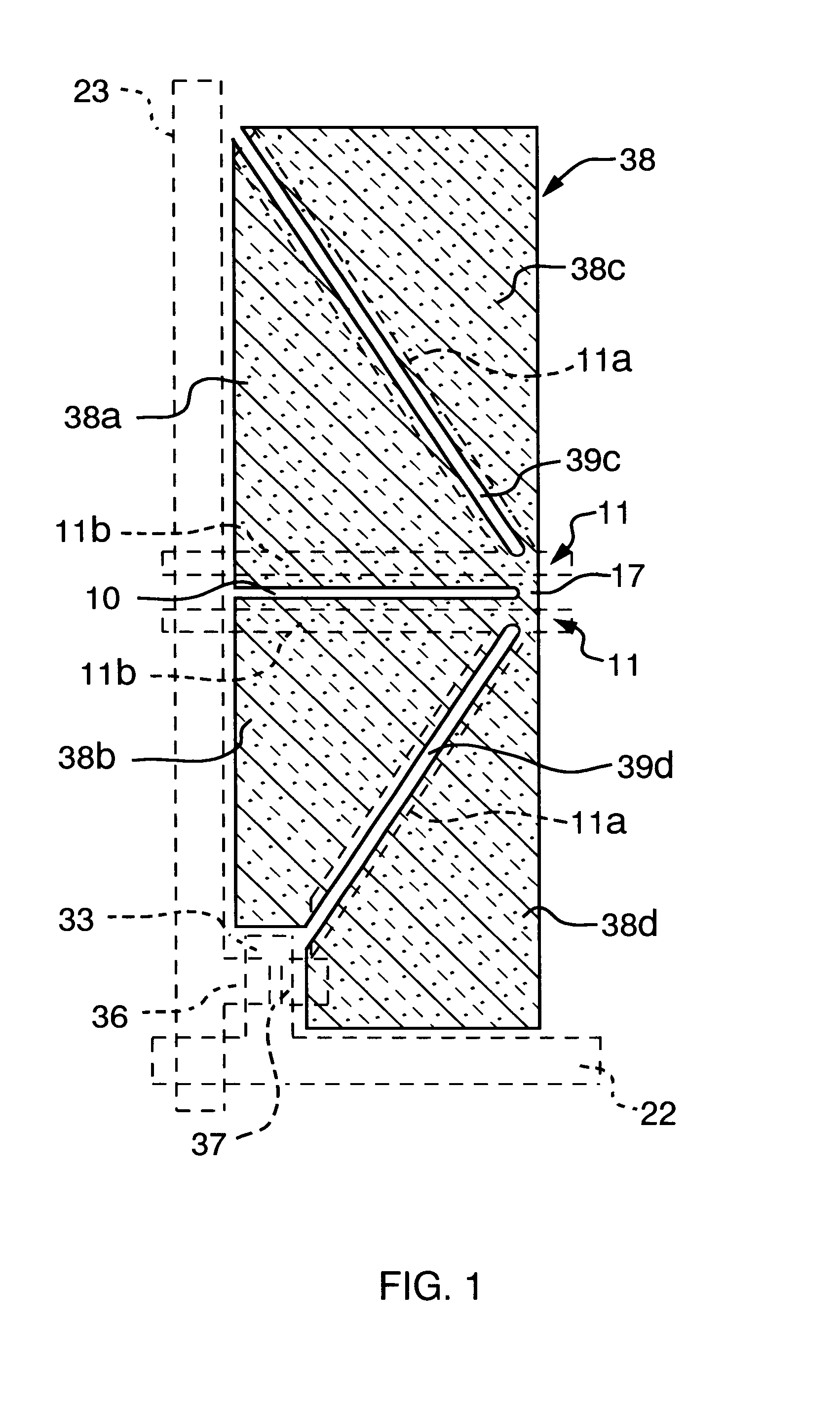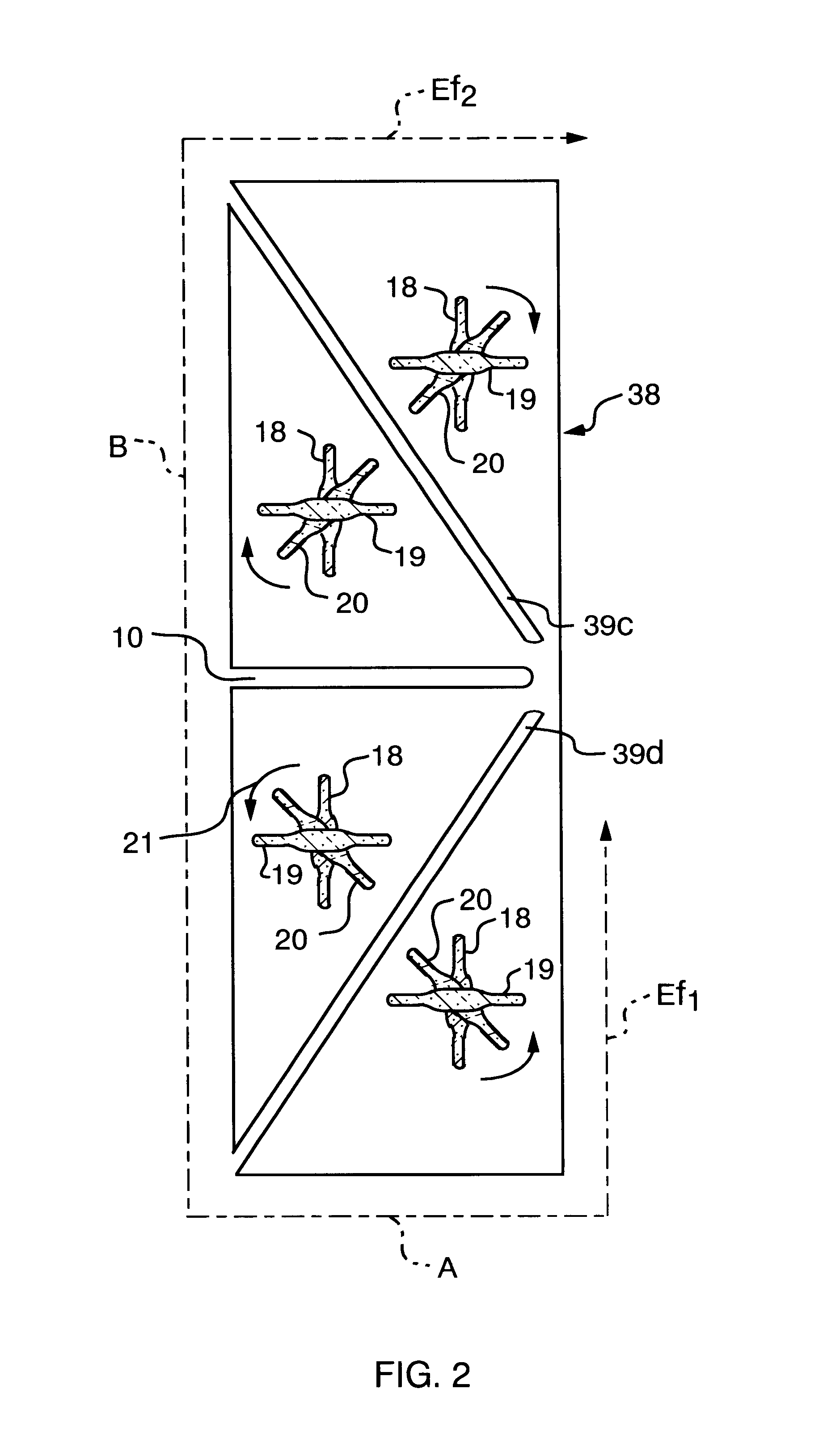Liquid crystal display apparatus
a technology of liquid crystal display and display screen, which is applied in the direction of instruments, non-linear optics, optics, etc., can solve the problems of increasing and achieve the effects of reducing the load on the manufacturing process correspondingly, suppressing the fluctuation of pixel-based gradation, and controlling more stably
- Summary
- Abstract
- Description
- Claims
- Application Information
AI Technical Summary
Benefits of technology
Problems solved by technology
Method used
Image
Examples
first embodiment
Referring to the drawings, preferred embodiments of the present invention will be explained in detail. FIG. 1 is a plan vie showing essential portions of a liquid crystal display device according to the present invention, and FIG. 2 is a plan view showing the orientation splitting state in the liquid crystal display device in FIG. 1. The basic technology of the orientation splitting in the present embodiment is similar to the technique described in the JP Patent Kokai JP-A-10-20323 explained with reference to FIG. 10.
The liquid crystal display device of the present embodiment differs from the prior-art technology as to the structure of the pixel electrode 38, openings (slits) 39 and 10 and the control electrode 11 shown in FIG. 1, the directions of orientation of the liquid crystal molecules 18 on the side of the pixel electrode, the liquid crystal molecules 19 on the control electrode side and the liquid crystal molecules 20 of the intermediate layer, and as to the arrangement of t...
second embodiment
FIG. 3 is a plan view showing essential portions of the liquid crystal display device according to the present invention. The basic technology of the orientation splitting in the present embodiment is also similar to the technology explained with reference to FIG. 10.
In the present embodiment, the pixel electrode 38 is formed with an opening (first opening or slit) 10 extending substantially parallel to the gate line 22 for splitting the pixel electrode 38 in two in the extending direction of the drain line 23, an opening (second opening or slit) 39c and another opening (third opening or slit) 39d extending from near the end of the opening 10 towards the drain line 23 at a pre-set angle in a direction away from the drain line 23 for further splitting each of the split regions into two. That is, the four regions 38ato 38d in the pixel electrode 38 are substantially line-symmetrical with respect to the respective shapes of the four regions 38a to 38d in the first embodiment, as a resu...
third embodiment
FIGS.4 and 5 are plan views showing essential portions of the liquid crystal display device in the present invention and a plan view showing the state of orientation splitting in the liquid crystal display device of FIG. 4, respectively. The technique underlying the orientation splitting in the present embodiment is similar to the technique explained with reference to FIG. 10.
Referring to FIG. 4, the pixel electrode 38 is provided with an opening (first opening) 39a and an opening (second opening) 39b crossing each other at a mid portion thereof to split the pixel electrode 38 in substantially four equal (rectangular) portions. End marginal portions of the openings 39a, 39bconstitute electrically conductive portions 17 for electrically connecting the neighboring regions 38a to 38d to one another. As an underlying layer to these openings 38a to 38d, there is provided a control electrode 11 extending substantially to follow the contours of the openings 39a, 39b. The control electrode ...
PUM
 Login to View More
Login to View More Abstract
Description
Claims
Application Information
 Login to View More
Login to View More - R&D
- Intellectual Property
- Life Sciences
- Materials
- Tech Scout
- Unparalleled Data Quality
- Higher Quality Content
- 60% Fewer Hallucinations
Browse by: Latest US Patents, China's latest patents, Technical Efficacy Thesaurus, Application Domain, Technology Topic, Popular Technical Reports.
© 2025 PatSnap. All rights reserved.Legal|Privacy policy|Modern Slavery Act Transparency Statement|Sitemap|About US| Contact US: help@patsnap.com



